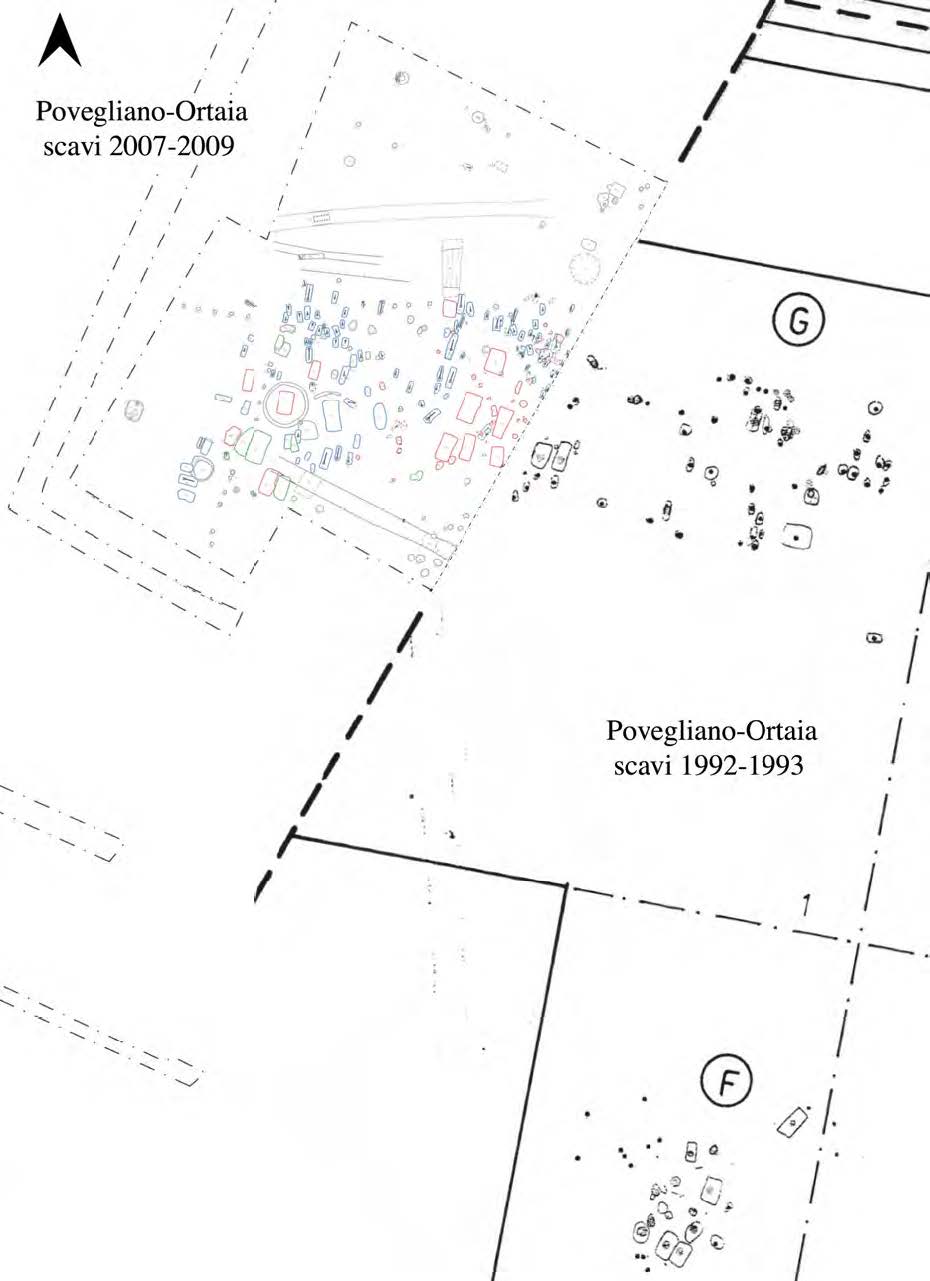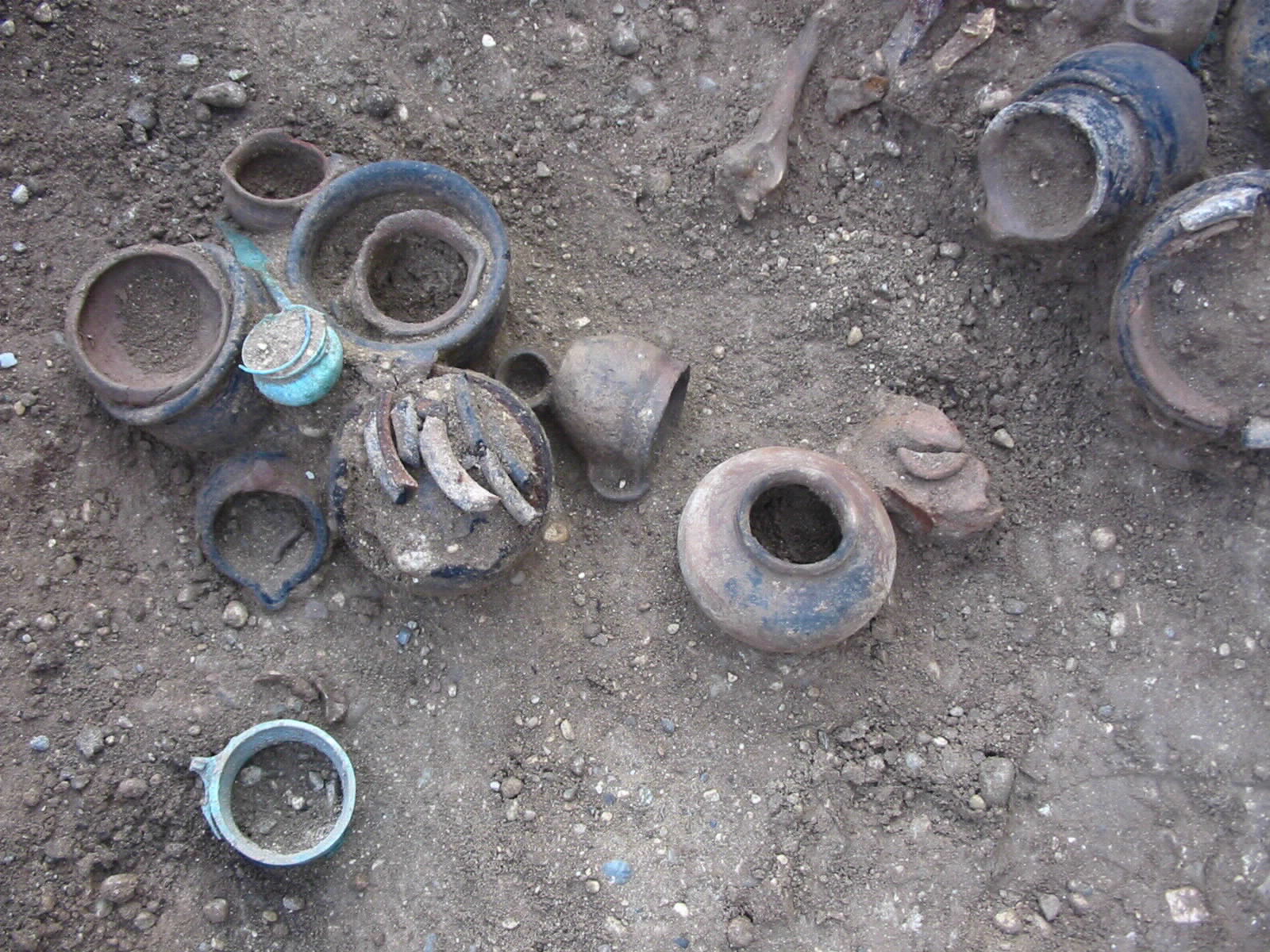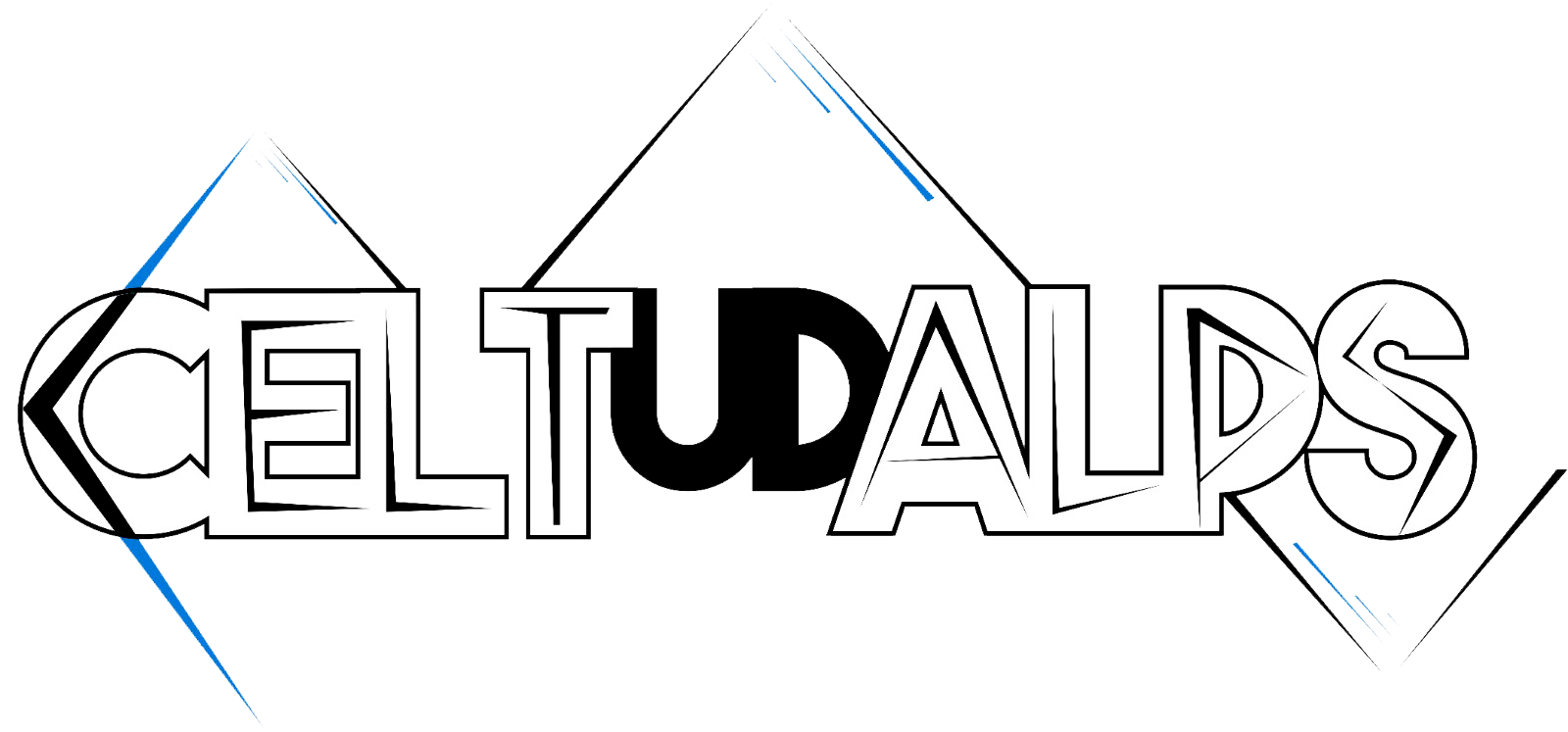Povegliano
The necropolis of Povegliano Veronese (località Ortaia, Madonna dell’ Uva secca) was excavated in two different campaigns between 1992 and 1993 and 2007-2009. The archaeological works brought to light a total of 601 burials representing different chronological and cultural phases (Late Iron Age, Gallo-Roman, Roman and Longobard) and both incinerations and inhumations (Fig.1).

The excavations of 2007-2009 returned almost exclusively Gallo-Roman cremations (n=50) and inhumations (n= 112), the latter reserved almost exclusively to subadults. Grave goods during the Gallo-Roman phase include jewelry and personal adornments, weapons (mostly associated with cremations) and occasionally work tools associated to agriculture and craftsmanship and artisanal (knives, scrapers, skewers). Particularly frequent are ceramic and metal vessels (Fig.2) for the consumption of food and drink, animal food offerings, and coins. Metal elements like weapons, pins, and vessels are in most cases ritually defunctionalised. Of particular interest from a cultural perspective is the presence on ceramic vessels of inscriptions in Celtic language.
The necropolis of Povegliano-Ortaia is one of the most important necropolis in northern Italy for the Late Iron Age (LTC2-D1 and D2). Together with other, contemporary contexts in the areas of Verona (e.g. Seminario Vescovile) and Mantua, it is an essential link to the world of the transalpine oppida. Starting from this period, armaments, jewelry, and metallic pottery undergo a capillary circulation throughout Europe, a sort of first globalization.

Figure 1-2: Vitali, D. et al. 2010. La necropolis di Povegliano Veronese-Loc. Ortaia (Verona). In Roncadori R. & Nicolis F. (eds.):” Antichi popoli delle Alpi. Sviluppi culturali durante l’età del Ferro nei territori alpini centro-orientali. Atti della giornata di studi internazionale, Trento.


